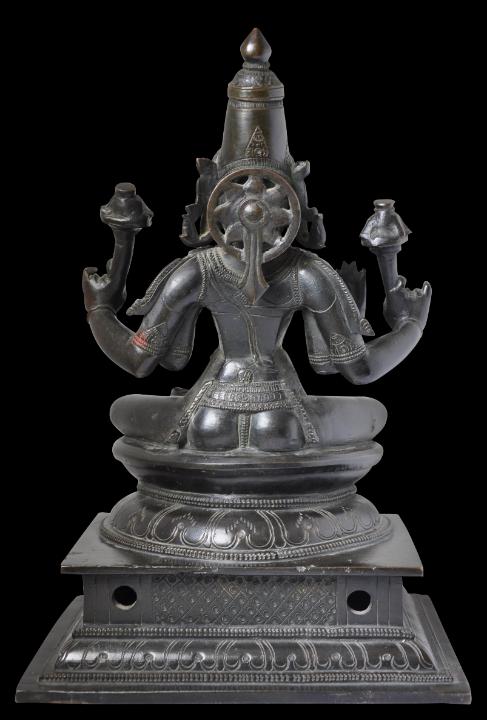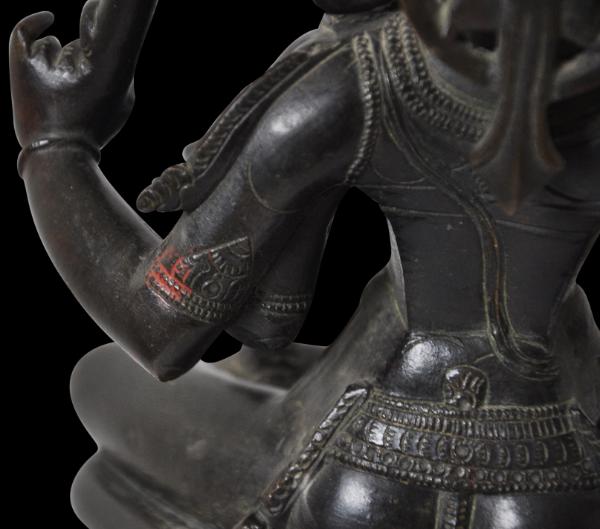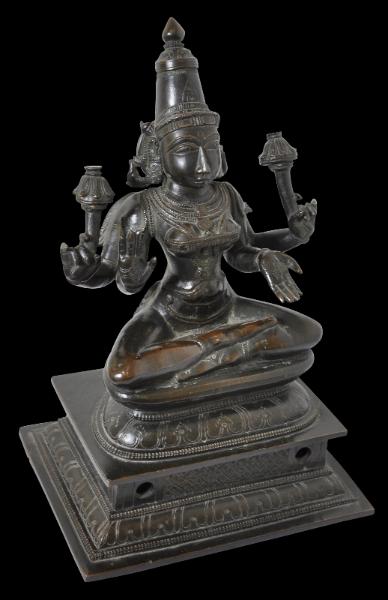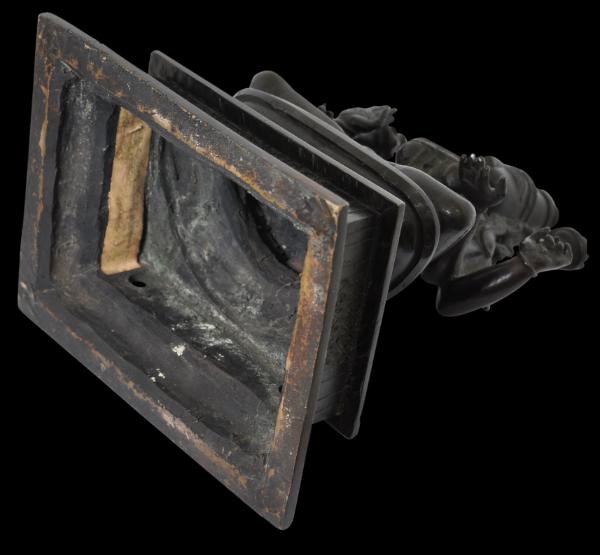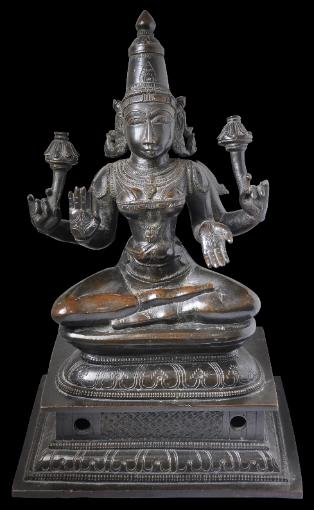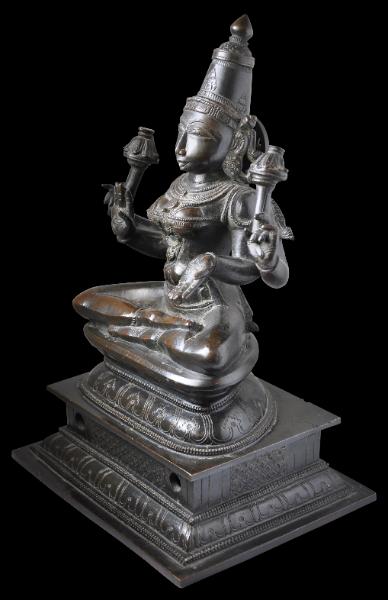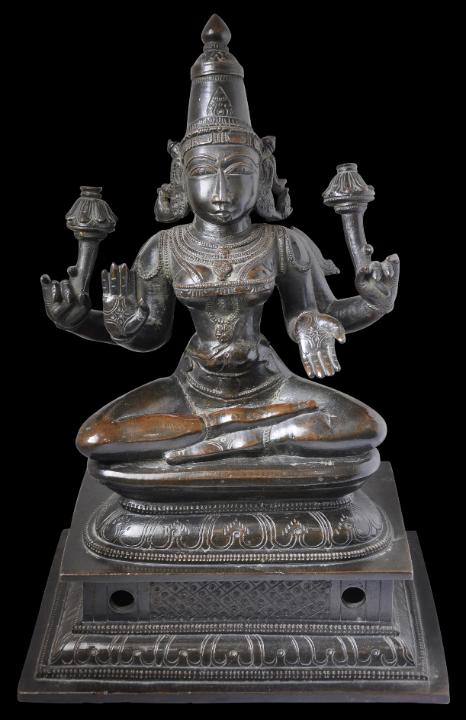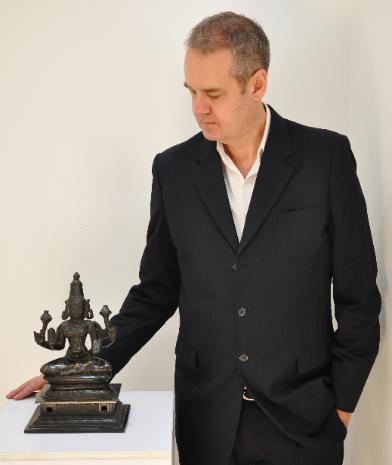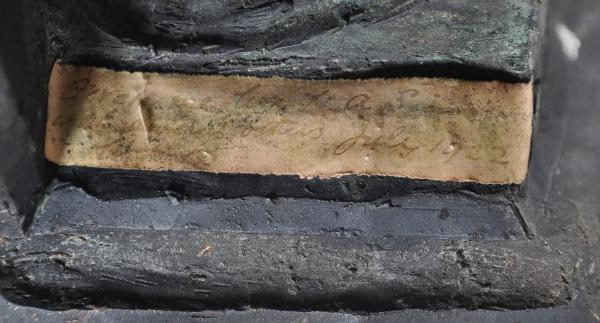
Indian Bronze Lakshmi
Bronze Figure of Lakshmi (Sri Devi)
Tamil Nadu, South India
18th-19th century
height: 33cm, width of base: 21.8cm
The large, portable bronze image of Lakshmi has been cast in a style that is typical of Tamil Nadu in India’s south. It shows the goddess seated in sattvasana on a double lotus throne, on a raised tiered and engraved plinth. Her front arms are held in abhaya and varada mudra, and her upper arms both hold open lotus buds. A kuchabandha band runs across her prominent breasts, multiple necklaces adorn her neck and large makara earrings decorate her ears. A tall, engraved cylindrical headdress surmounted by a lotus bud finial rises from her head.
The base is cast with two pairs of holes front and back to allow the image to be portable by being secured to a platform and thus carried aloft during temple processions. These holes suggest that the image was cast for ritual and temple use.
An old, partly indistinct label inside the base says that the item image was acquired in July 1922. Traces of red sindoor powder about the image suggest that it was used ritually in India, so at least a 19th century dating seems most likely. However, several bronzes in the Clive Collection at Powis Castle in Wales which were collected in South India in the 18th century and around 1800 have similar plinths, facial characteristics, and so on, so it is possible that the image here might date to the late 18th century as well.
The bronze has a fine, varying dark patina. There are no losses or damage.
References
Archer, M. et al, Treasures from India: The Clive Collection at Powis Castle, The National Trust, 1987.
Blurton, T.R.,
Hindu Art, The British Museum Press, 1992.Provenance:
UK art market; UK private collection
Inventory no.: 3224
SOLD

